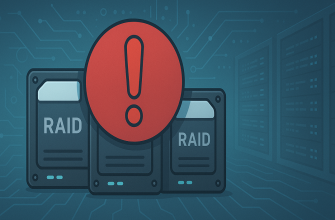10 Common Server Vulnerabilities Hackers Exploit in 2025 (And How to Fix Them)
- Introduction
- 1. Outdated Software and Unpatched Systems
- 2. Default or Weak Admin Credentials
- 3. Misconfigured Firewalls and Open Ports
- 4. Remote Code Execution (RCE)
- 5. Insecure APIs
- 6. Improper File Permissions
- 7. Lack of Encryption (HTTPS/TLS)
- 8. SQL Injection Vulnerabilities
- 9. Cross-Site Scripting (XSS)
- 10. Lack of Server Monitoring and Logging
- Final Thoughts
Introduction
As cyber threats evolve, server vulnerabilities remain one of the most exploited entry points for hackers. In 2025, attackers are using more advanced tactics to breach servers, steal data, and disrupt business operations. Whether you run a small business website or manage enterprise infrastructure, understanding these common server vulnerabilities is essential to securing your environment.
Here are the 10 most common server vulnerabilities in 2025, how attackers exploit them, and what you can do to defend against them.
1. Outdated Software and Unpatched Systems
Still a top threat in 2025, running outdated operating systems or server applications gives hackers an open door. Known vulnerabilities in unpatched software are often cataloged in public databases like CVE, making it easy for attackers to exploit.
Fix:
Set up automated patch management. Regularly update all software, especially web servers (e.g., Apache, NGINX), databases, and CMS platforms.
2. Default or Weak Admin Credentials
Surprisingly common, many servers are deployed with default usernames and passwords like “admin/admin” or use weak credentials.
Fix:
Implement strong password policies and enforce multi-factor authentication (MFA) for all admin-level access.
3. Misconfigured Firewalls and Open Ports
Leaving unnecessary ports open or misconfiguring firewalls exposes your server to unnecessary risk.
Fix:
Use a network scanning tool to audit open ports. Only allow traffic on required ports and segment your network appropriately.
4. Remote Code Execution (RCE)
RCE vulnerabilities allow attackers to execute arbitrary commands on your server. In 2025, automated bots scan for RCE bugs to install backdoors or crypto miners.
Fix:
Use secure coding practices, validate inputs, and monitor security advisories for the software you use.
5. Insecure APIs
Poorly secured APIs can leak data, allow privilege escalation, or provide unauthorized access.
Fix:
Secure APIs with authentication, rate limiting, and input validation. Use tools like OWASP ZAP to test for vulnerabilities.
6. Improper File Permissions
Exposed configuration files or writable directories can let attackers gain control of your system.
Fix:
Follow the principle of least privilege (PoLP). Set proper file permissions and use access control lists (ACLs) for sensitive directories.
7. Lack of Encryption (HTTPS/TLS)
Some servers still serve traffic over HTTP or use outdated encryption protocols, making data interception easy.
Fix:
Use HTTPS with TLS 1.3. Get a certificate from a trusted CA and implement HSTS headers for added protection.
8. SQL Injection Vulnerabilities
SQL injection remains a critical threat in 2025. It allows attackers to manipulate database queries and steal or destroy data.
Fix:
Use parameterized queries and ORM libraries. Regularly audit your codebase for injection flaws.
9. Cross-Site Scripting (XSS)
XSS allows attackers to inject malicious scripts into web applications served by your server.
Fix:
Escape user inputs, implement Content Security Policy (CSP), and sanitize form data on both client and server sides.
10. Lack of Server Monitoring and Logging
Without monitoring, you won’t know when your server is under attack—or already compromised.
Fix:
Set up intrusion detection systems (IDS) and enable centralized logging. Use tools like Fail2Ban, OSSEC, or ELK stack for real-time alerts.
Final Thoughts
In 2025, server security is more critical than ever. With the rise of AI-powered attacks and automated vulnerability scanning, even minor misconfigurations can lead to major breaches. Regularly auditing your systems, applying patches, and following best practices can significantly reduce your risk.









